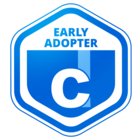Need help understanding best utilization of extend enterprise with multiple clients. Any insight would be appreciated.
SCENARIO
The root of our service is external facing with over 300 branches at the root level. Now we’ve added extended enterprise for the internal staff.
We want this client to support compliance, regulatory, and professional development.
We’ve got 5 clients at our disposal.
How should this be structured?
One client with a branch for each department, and publish channels for compliance, regulatory, and professional development content?
Internal (branch)
- Sales
- Marketing
- IT
Or a client for each of the following with a dashboard on the welcome page with links the clients like this?
Compliance (client)
Internal (branch)
- Sales
- Marketing
- IT
Regulatory (client)
Internal (branch)
- Sales
- Marketing
- IT
Professional Development (client)
Internal (branch)
- Sales
- Marketing
- IT








